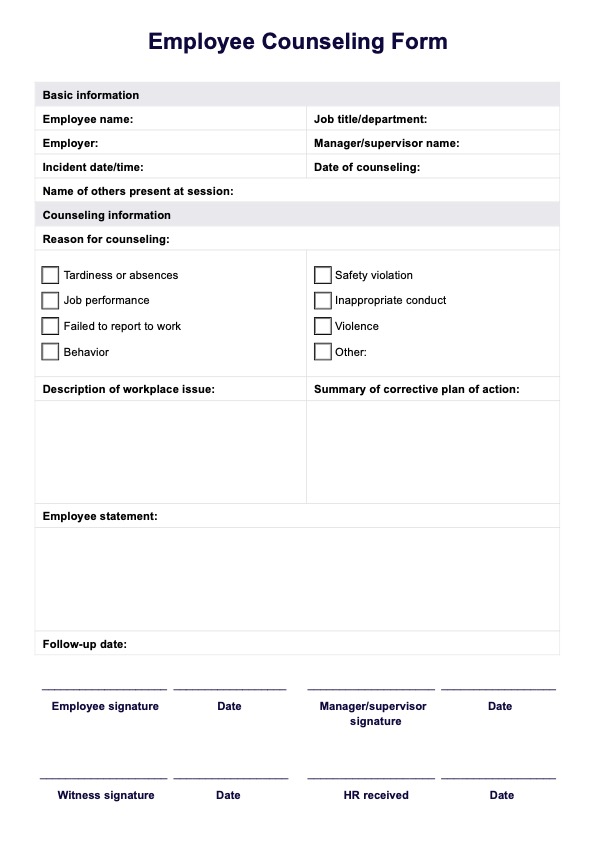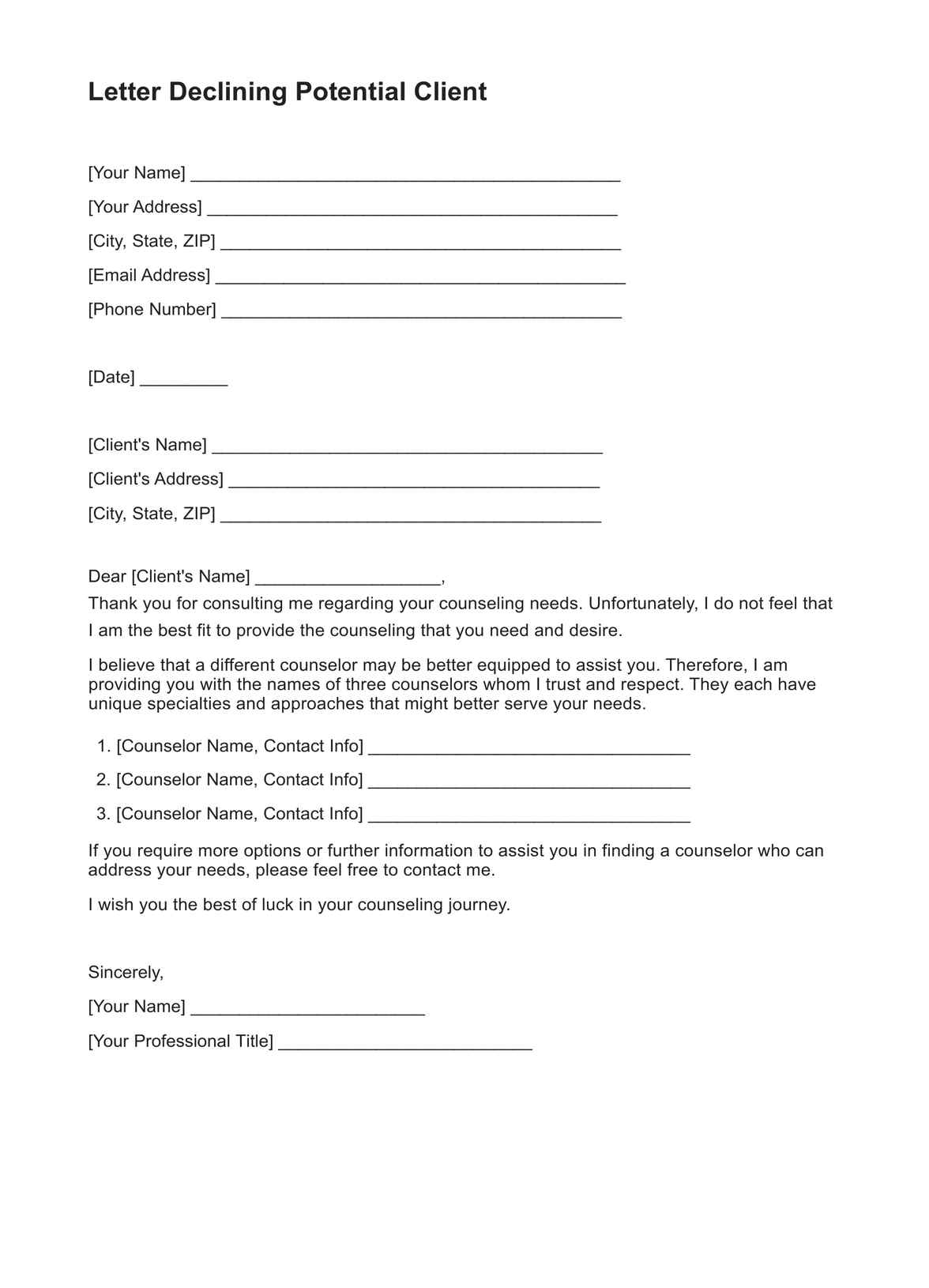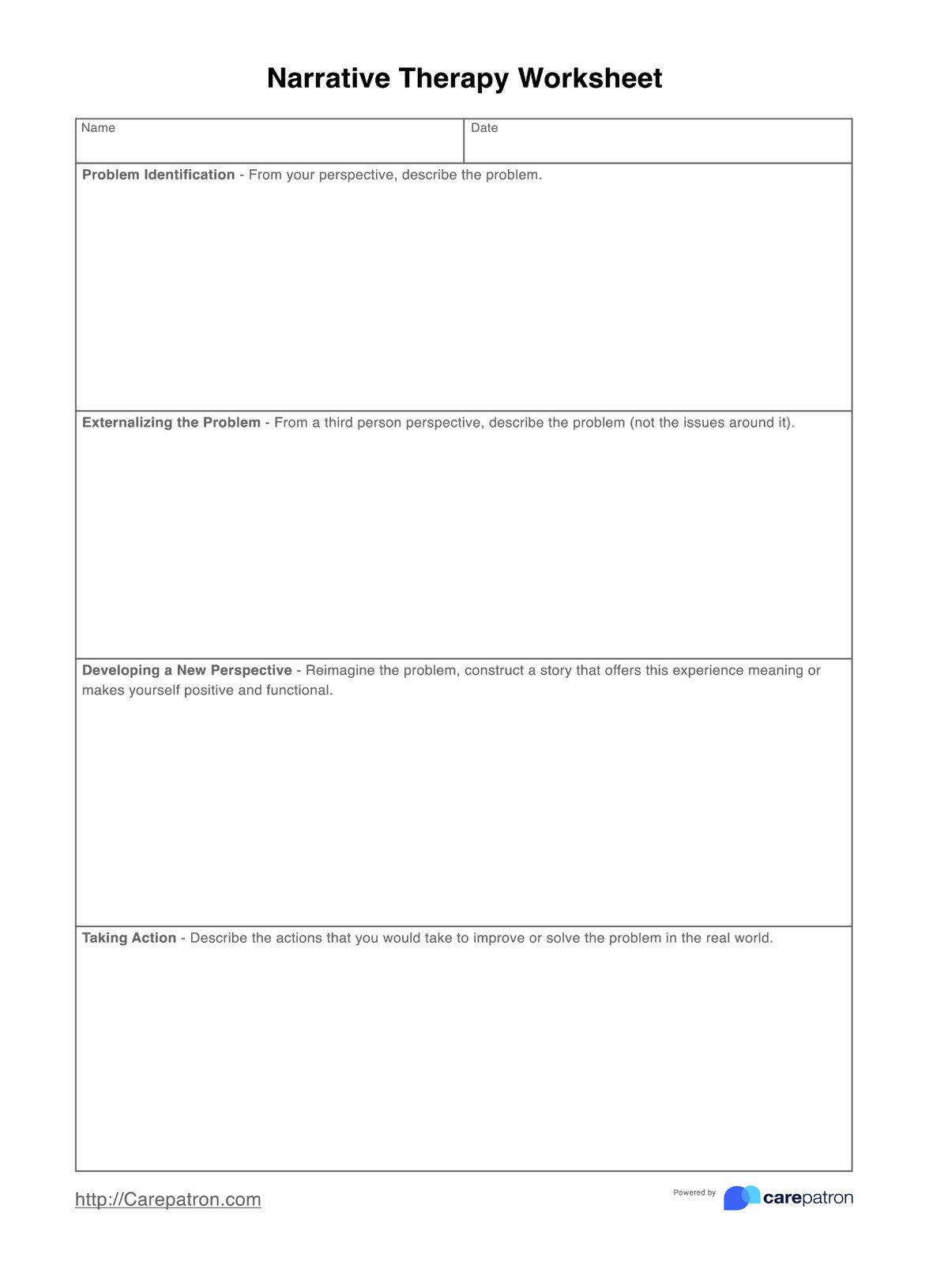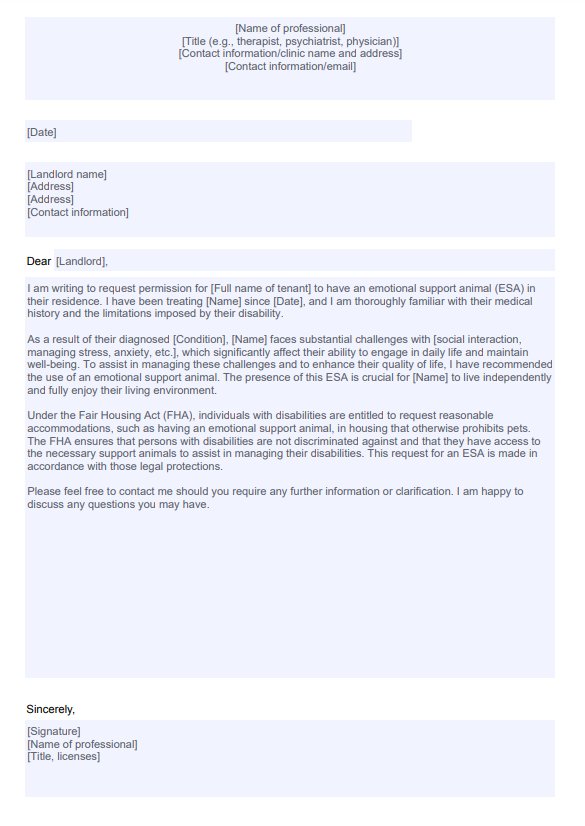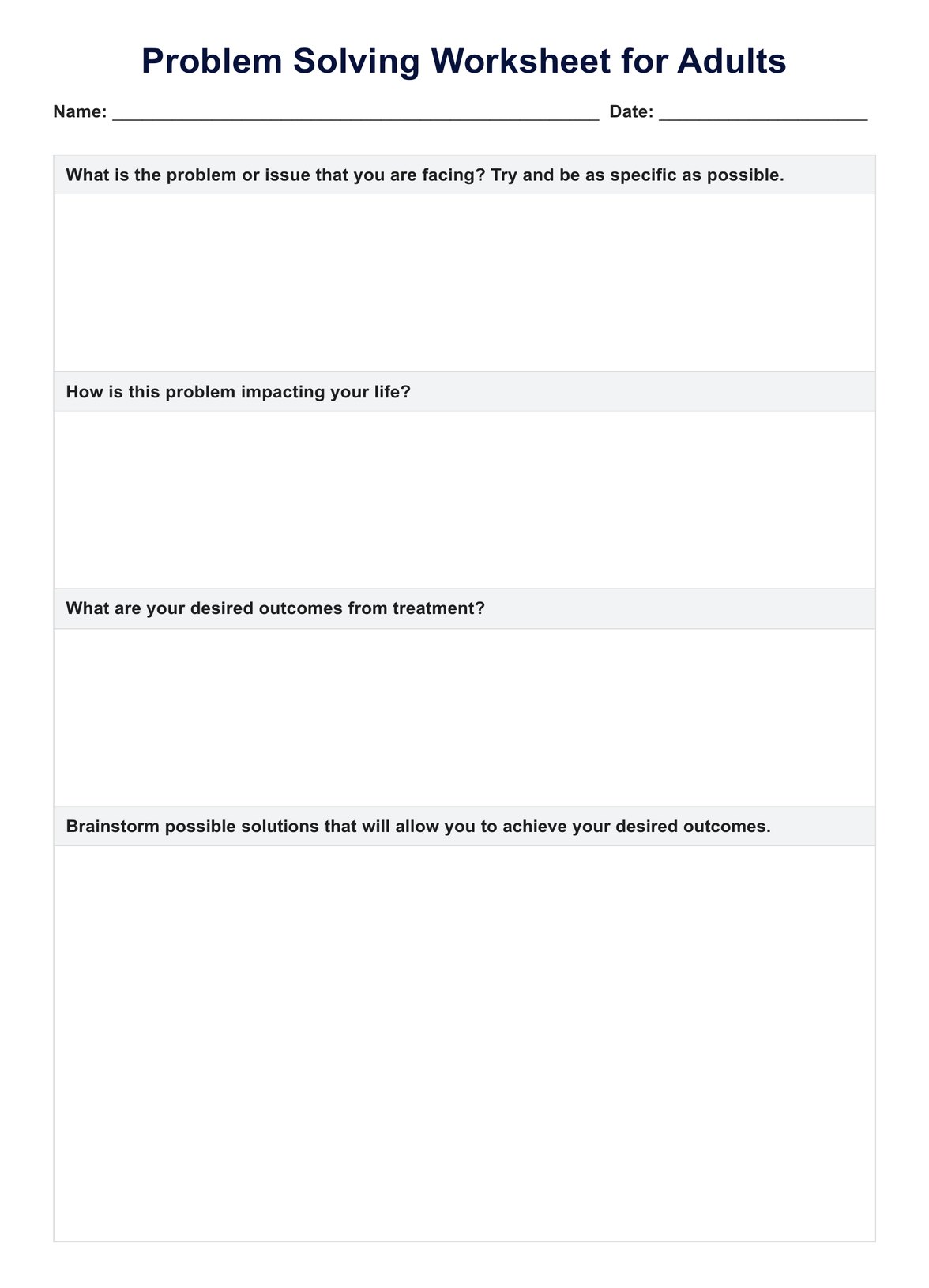What Leads You to Anger Worksheet
Struggling with anger? Discover insights with the What Leads You to Anger Worksheet. Identify triggers & find healthier responses. Download now!


What is Anger Management?
Anger is a natural response to threats, injustices, or frustrations. While it can be useful for self-preservation and problem-solving, uncontrolled anger can lead to harm. It encompasses a range of emotions, from mild irritation to intense rage, often accompanied by physiological changes like increased heart rate and adrenaline release.
Anger management refers to techniques and strategies aimed at recognizing, controlling, and expressing anger in a healthy manner. It doesn't seek to eliminate anger but instead teaches individuals how to manage it constructively. These methods include relaxation exercises, cognitive restructuring, assertiveness training, and problem-solving skills, often coupled with professional help through therapy or counseling.
Effective anger management fosters healthier relationships, reduces stress, and enhances personal growth by addressing the root causes of anger. It empowers individuals to express themselves assertively and promotes emotional intelligence and self-control. Ultimately, anger management leads to a more harmonious and fulfilling life by positively channeling the energy of anger and responding to life's challenges with greater composure.
What Leads You to Anger Worksheet Template
What Leads You to Anger Worksheet Example
How to use the What Leads You to Anger Worksheet:
Here are six steps involved in effectively using this template:
Step 1: Introduction
Explain the purpose of the "What Leads You to Anger Worksheet" to your client. Emphasize that it is a tool to help them recognize and manage their anger triggers.
Step 2: Table Setup
Direct your client to the provided table with three columns: "Triggers," "Situations or Events," and "Emotions." This layout makes it easy to document their experiences.
Step 3: Identifying Triggers
Encourage your client to list specific triggers or situations that lead to their anger in the "Triggers" column. This might include common stressors like work-related issues, family conflicts, or personal frustrations.
Step 4: Recognizing Patterns
Help your client analyze the information they've recorded. In the "Situations or Events" column, ask them to identify any common patterns or themes among their listed triggers.
Step 5: Emotional Awareness
In the "Emotions" column, your client should describe how they typically feel when they encounter these triggers. This step helps in recognizing the emotional aspect of their anger.
Step 6: Action Planning
Based on the insights gained, guide your client in developing strategies for managing their anger. Encourage them to explore healthier responses and coping mechanisms when confronted with these triggers. Suggest seeking professional help if their anger issues are severe or persistent.
When Would you use this What Leads You to Anger Worksheet?
Healthcare professionals, such as therapists and counselors, can integrate it into their sessions, aiding clients in uncovering the root causes of their anger and boosting self-awareness. When used collaboratively, it assists in identifying and addressing recurring anger triggers.
Additionally, individuals can independently utilize this worksheet for self-reflection and personal growth, helping them better grasp their anger triggers and emotional responses. It empowers individuals to take proactive measures for managing anger and cultivating healthier coping strategies.
Whether led by healthcare professionals or trained facilitators, anger management workshops and support groups can incorporate this worksheet as a practical exercise. This prompts group discussions, enabling participants to share insights and learn from one another's experiences in a supportive setting.
Furthermore, in conflict resolution and relationship counseling, this worksheet can be employed to identify the specific triggers behind conflicts and tensions within relationships. By revealing common anger triggers and emotional responses, healthcare professionals guide individuals in addressing these issues more constructively, ultimately improving relationships and fostering healthier interactions.
What are the Benefits of Using this What Leads You to Anger Worksheet?
Enhanced Anger Management Skills
By recognizing their triggers and emotions, individuals can develop better strategies for managing their anger effectively. The worksheet provides a structured framework for self-reflection, helping individuals take control of their emotional responses.
Constructive Communication
The worksheet aids in identifying patterns in interpersonal conflicts. This insight can improve communication and conflict resolution, reducing tension (Davila & Sargent, 2003).
Stress Reduction
Chronic anger can lead to high stress levels, harming mental and physical health (Kiecolt-Glaser et al., 2005). Using this worksheet to manage anger can lower stress and improve overall well-being.
Enhanced Problem-Solving
Identifying anger triggers often unveils underlying issues. This worksheet facilitates a problem-solving approach, encouraging individuals to address the root causes of their anger (Novaco, 2010).
Personal Growth and Resilience
By using the worksheet, individuals can develop resilience by learning to cope with anger more effectively. This resilience can extend to various life situations (Tugade & Fredrickson, 2004).
Commonly asked questions
Completion time for the worksheet varies but typically takes 15 minutes to an hour.
This worksheet aids by enhancing self-awareness, helping identify anger triggers, and developing effective anger management strategies.
Use this worksheet when exploring and managing anger triggers and emotions. It is suitable for therapy, conflict resolution, and self-help.
Anyone seeking anger management, therapy, personal growth, or healthcare professionals like therapists and counselors can use this worksheet.


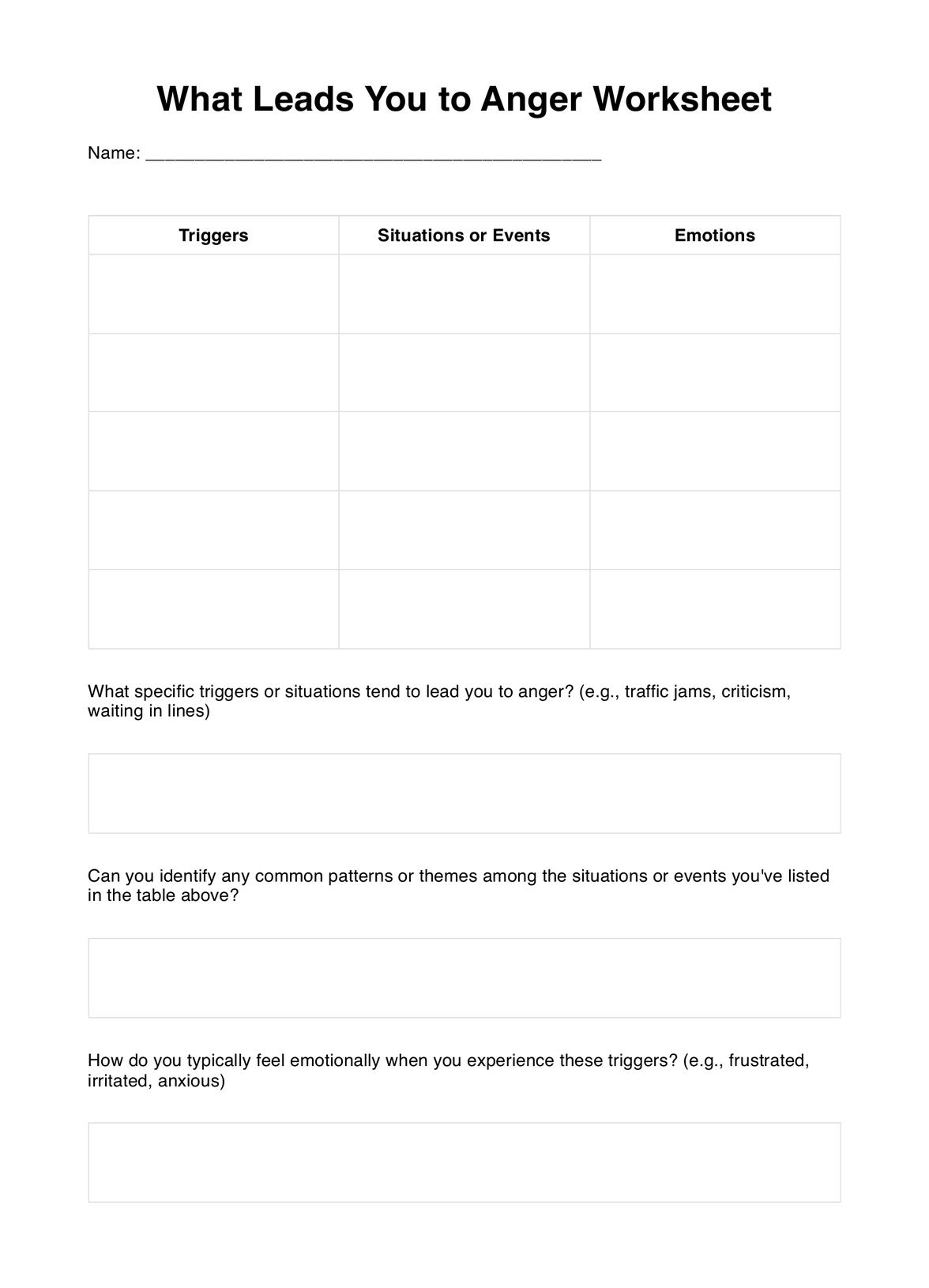
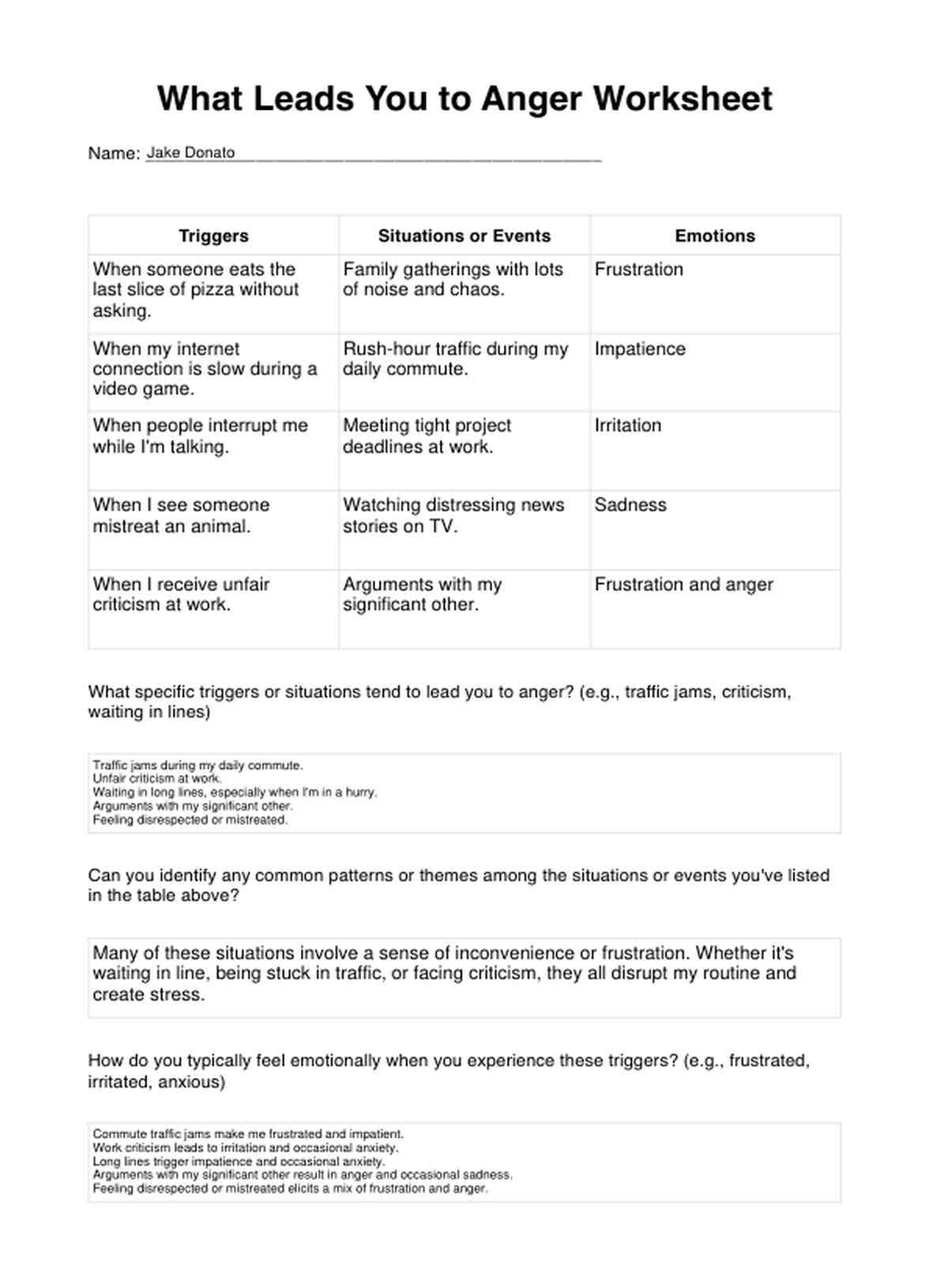















-template.jpg)





















































































